ABT Framework Student Resource Page
Round 12
Contents
Sign up to participate in Working Circles (Separate Page)
Download Previous Chat Logs (Separate Page)
Session 1 Resources – Outer Circle
Session 2 Resources – Singular Narrative
Session 3 Resources – Hero’s Journey
Session 4 Resources – Archplot
Session 5 Resources – The Fool with Patty Limerick
Session 6 Resources – Listening with Brian Palermo
Session 7 Resources – Audience as Hero with Park Howell
Session 8 Resources – Genuflect to the Elders with Dianna Padilla
Session 9 Resources – Narrative Spiral with Nancy Knowlton
Session 10 Resources – Narrative is Leadership
Synopsis on Working Circles – If you’re new to Working Circles, start by reading this.
Working Circle Half Hour Schedule – Use this to guide you through how to host your half hour Working Circle
Sign up to host a Working Circle
- Find an available half hour time slot on this page.
- Email mattmdavid@gmail.com to have your time slot reserved.
- Include the following in your email.
- Day
- Half hour time slot in Pacific Time (PDT).
- Short title for your Working Circle based on your ABT.
Host responsibilities
- Email your participants your ABT before the Working Circle so they have time to review it – we’ll send you the list of your participants’ email addresses 3-5 days ahead of time.
- You can send your participants a revised ABT of what you originally submitted to class or use a brand new ABT all together.
- During the Working Circle, use the ABT Blue Card and follow the half hour schedule.
- We’ll send you and your participants a Webex link for your Working Circle 3-5 days before you’re scheduled to host, so no need to worry about that.
Participant responsibilities
- Sign up to participate in a minimum of 2 Working Circles. Sign up here.
- Review the ABT that the host sent you ahead of time.
- Be prepared to use the ABT Blue Card and all the tools you’ve learned in class to help the host clarify their narrative.
Sign up to host a Working Circle (see above)
Download the ABT Blue Card – Have it open or printed out and ready for each class.
Watch the AAAS video:
Session 1 Resources – Outer Circle
If you had an ABT Build session and want to get your notes from the chat, then you can download previous chat logs here.
Optional Exercise #1: The 5 Word Problem
“What’s the problem?” is the most common question Randy asks during the ABT Builds. For this exercise, try to finish this sentence “The problem is _____” and use only 5 additional words.
Examples: The problem is bad resource management.
The problem is the old method doesn’t work.
The problem is we have bad data.
Stripping down your problem to just 5 words can really help you clarify what your ABT is really all about.
Session 2 Resources – Singular Narrative
Week 1 Working Circles are available. Sign up to participate here.
Dr. Wenowdis:
Nicholas Kristof’s Advice for Saving the World – The importance of the singular narrative.
‘Data-Driven’ Campaigns Are Killing the Democratic Party – Finding your Christmas Tree problem.
Three Forms of the ABT – It’s recommended you read this article and get an understanding of the cABT (Conversational ABT).
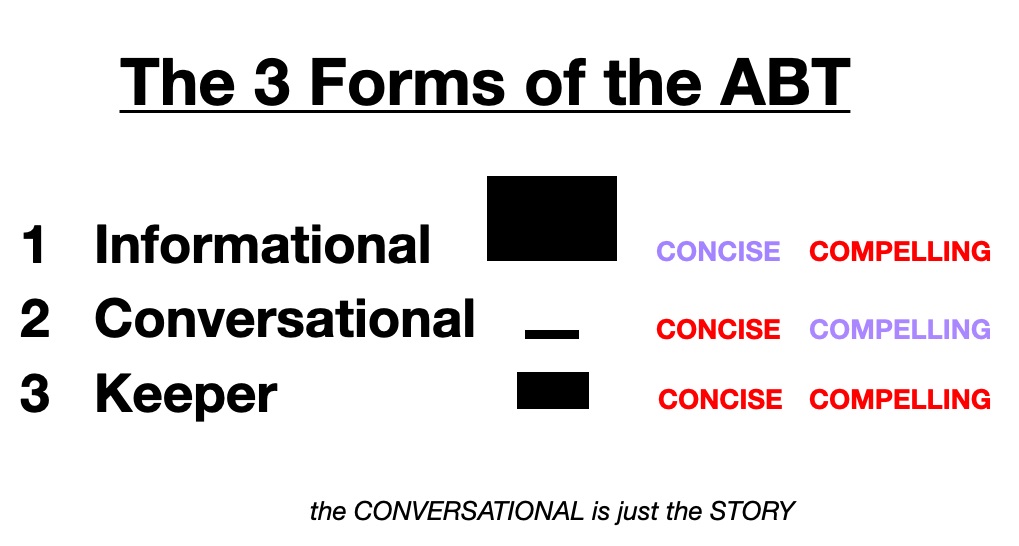
Optional Exercise #2: cABT
Randy might ask you the cABT version of your ABT, so for this exercise you’ll prepare your cABT ahead of time.
The cABT should have all specifics stripped off of it. Use nothing but generic words. For example, if your ABT dealt with a new way to clean junk from the ocean that’s an improvement and the old system is outdated, the cABT would be “We had a method we were using for a while, but it’s not working that great, so now we want to use a better one.”
See? We can’t tell that you’re working on cleaning the environment. You could just as well be telling me that you’re implementing a new accounting system at your bank for all we know. That makes it a good cABT – the specifics are stripped out, leaving just the base narrative. And then from the base cABT, you can start adding specifics again when constructing your kABT.
Session 3 Resources – Hero’s Journey
Matthew Winkler Video: What makes a hero? – We only watched the first two minutes in class. Watch this to the end to see how the hero’s journey applies to your life:
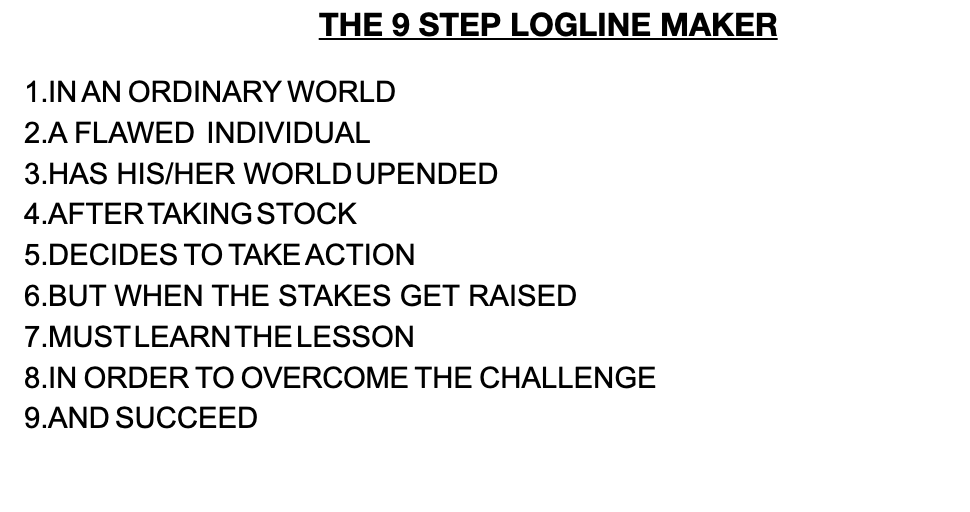
Oprah’s Golden Globes Speech – A great example of using Nested ABTs. Color coded in the ABT format.
Optional Exercise #3: Using the Dobzhansky Template to find your “One Thing.”
Restructure your ABT in the form of a Dobzhansky Template to help you find your singular narrative.
Dobzhansky Template: Nothing in _______ makes sense, except in the light of ________.
Examples: Nothing in biology makes sense, except in the light of evolution.
Nothing in geology makes sense, except in the light of plate tectonics.
Nothing in the management of mule deer makes sense except in the light of correctly estimating abundance.
Nothing in the challenge of teaching human anatomy makes sense except in the light of time management.
Session 4 Resources – Archplot
Archplot vs Miniplot summary:
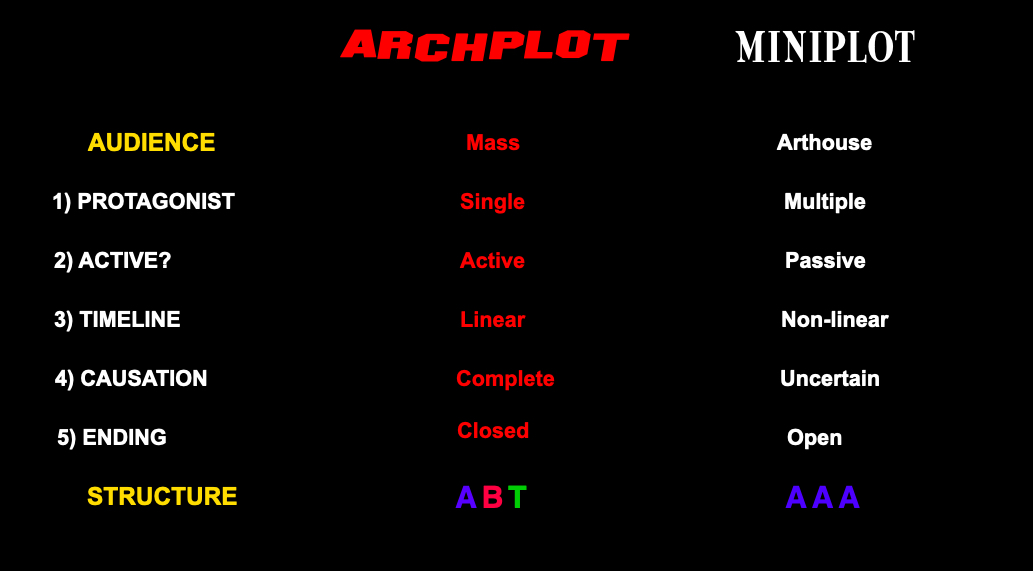
Optional Exercise #4: Using IF/THEN to draw on the power of the future.
Read about using the IF/THEN tool in “The Narrative Gym” (Chapter 5, print pages 41 thru 47, pdf pages 47 thru 53 – Randy emailed all of you a pdf copy of The Narrative Gym on March 11th. If you can’t find it, email mattmdavid@gmail.com for a replacement).
The IF/THEN tool isn’t applicable for all ABTs, but experiment and see if it is for yours. Try using a positive IF/THEN in the AND to help set the stakes to the Outer Circle of how great everything will be if it goes to plan. Or use a negative IF/THEN in the BUT to show the Outer Circle how bad things can be if everything goes astray. In either case, be as specific as you can to show the Outer Circle what is at stake if everything goes right in the AND or if everything goes wrong in the BUT.
Session 5 Resources – The Fool with Patty Limerick
Fools and Working Circles
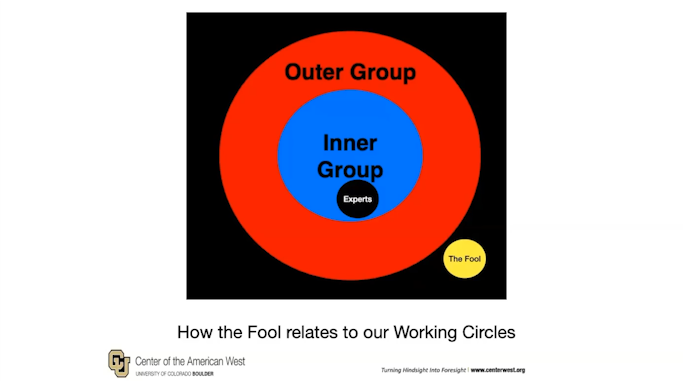
Not My First Rodeo – Patty Limerick’s Blog
Dancing With Professors: The Trouble With Academic Prose – A New York Times article written by Patty Limerick in 1993 about the problems academics have with communication. Still relevant today!
Session 6 Resources – Listening with Brian Palermo
Audience focused communication requires listening:
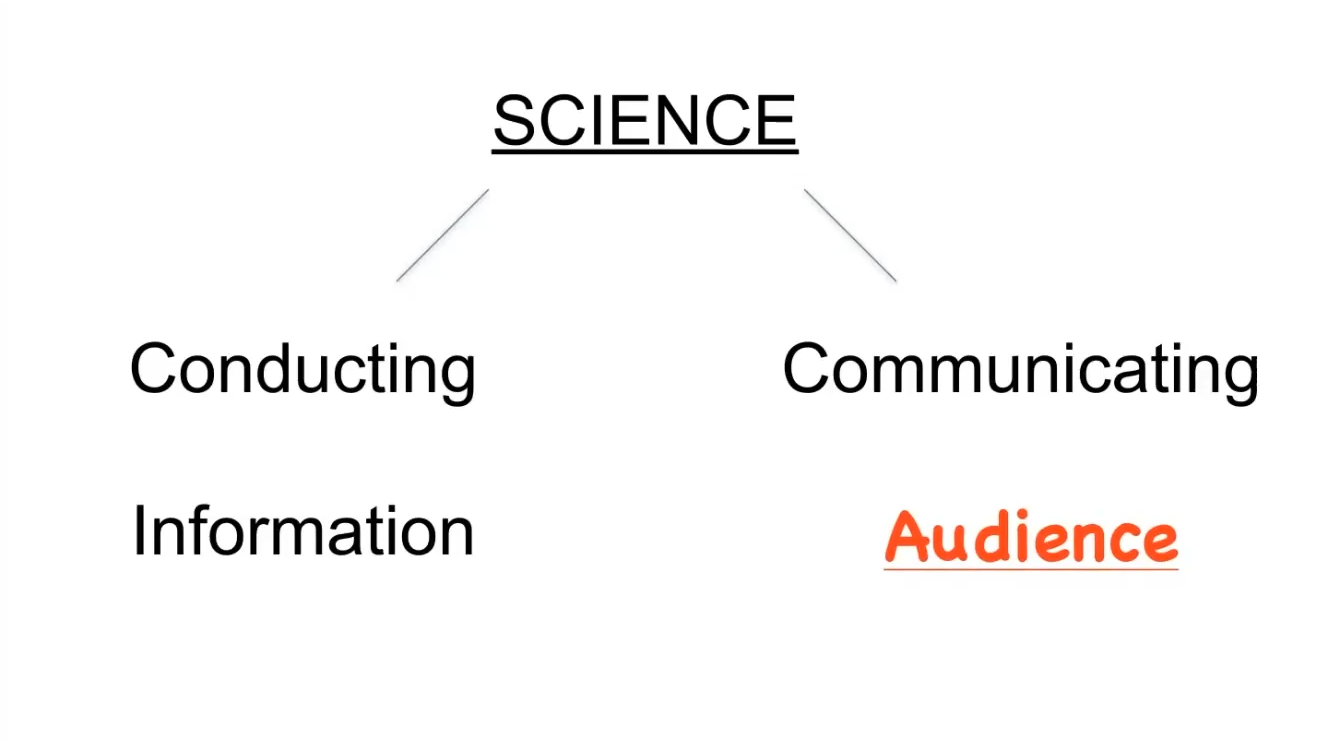
Brian Palermo’s Resources – Brian offers a number of resource videos on his website, some with interactive exercises built in. Topics include listening, utilizing emotional intelligence, and audience focused communication. He also offers online improv training to help improve listening and communication skills.
Session 7 Resources – Audience as Hero with Park Howell
Complicating the Narrative – An article that provides a counterpoint and criticism of the singular narrative. While we don’t necessarily agree with many of the points in the article, it’s still worth sharing and thinking about.
Park Howell’s Business of Storytelling Podcast – Randy has been featured on a number of Park’s podcasts. Here’s the most recent episode with Randy.
Brand Bewitchery: How to Wield the Story Cycle System to Craft Spellbinding Stories for Your Brand – Park Howell’s book on using the ABT and the Hero’s Journey to help market your brand.
Session 8 Resources – Genuflect to the Elders with Dianna Padilla
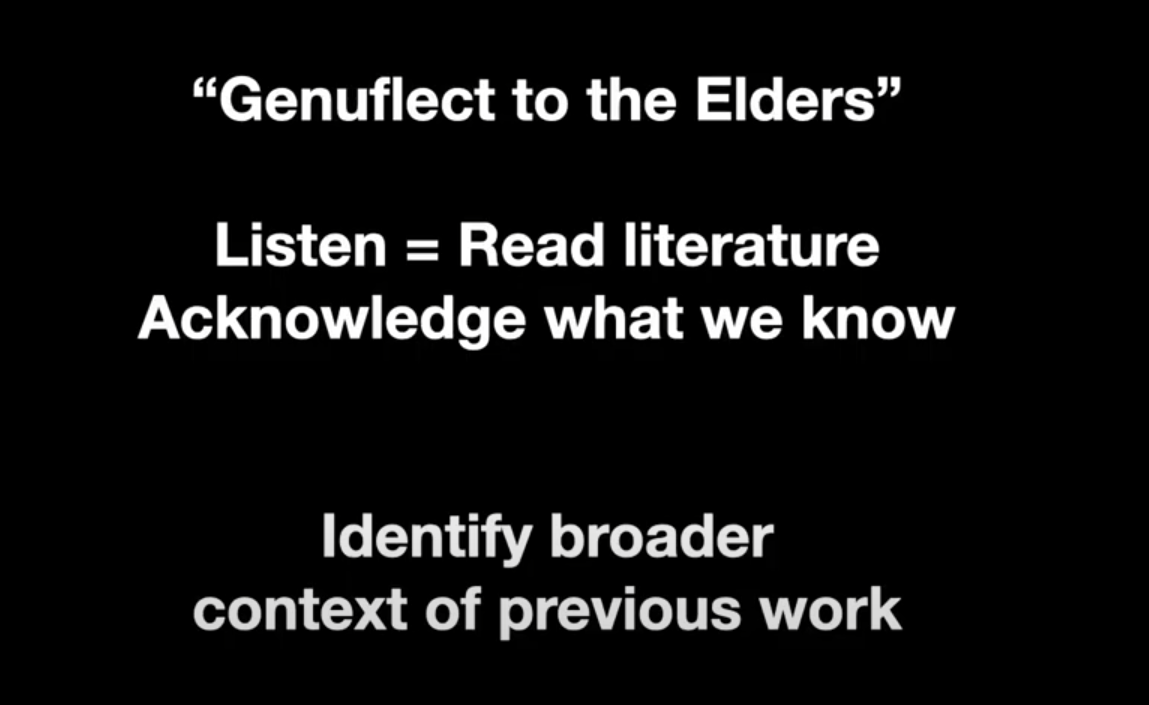
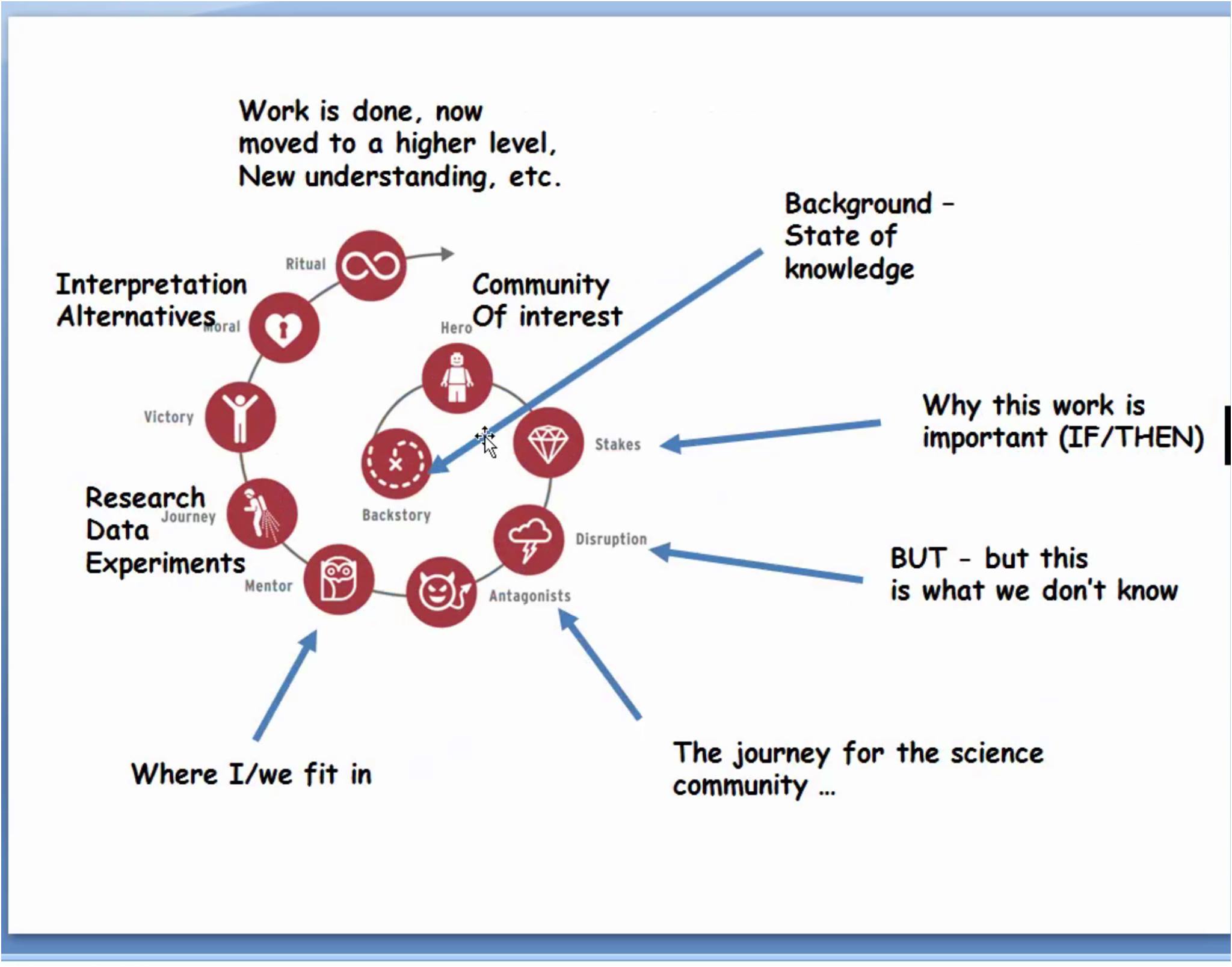 Advice on how women should pitch the “BUT” – A reply by Dianna to a former student’s question about the bias against women when they use the same strategies as men.
Advice on how women should pitch the “BUT” – A reply by Dianna to a former student’s question about the bias against women when they use the same strategies as men.
Are You Confused by Scientific Jargon? So Are Scientists – A New York Times article recommended by Dianna about how jargon clogs up scientific papers to the point that other scientists can’t understand them. Remember: your Inner Circle is always smaller than you think it is.
Session 9 Resources – Narrative Spiral with Nancy Knowlton
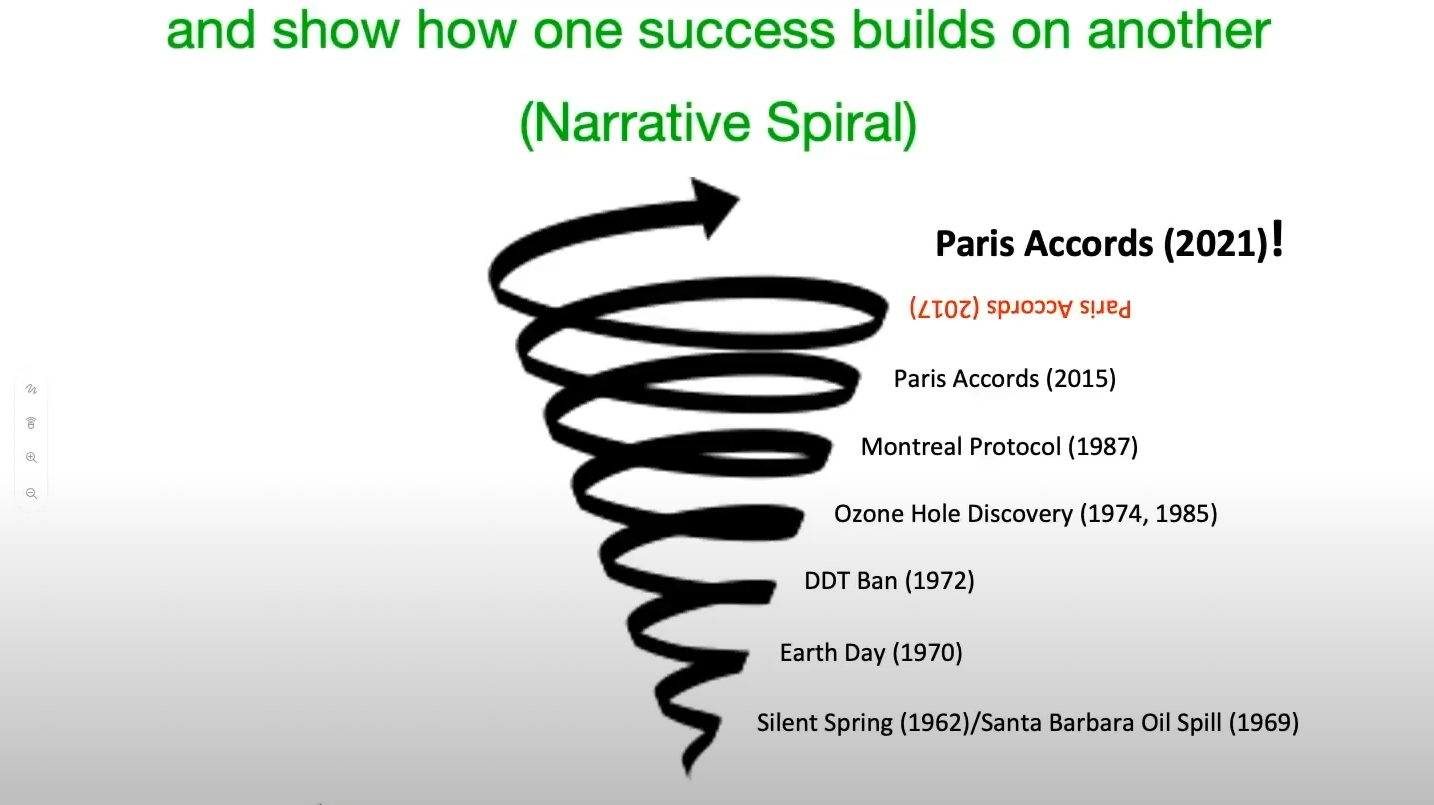
Individuals with greater science literacy and education have more polarized beliefs on controversial science topics – The paper Nancy referenced that shows how science literacy and political affiliation effect belief in controversial topics. Despite what scientists would like to believe, more information isn’t always the right answer.
Session 10 Resources – Narrative is Leadership
AND Frequency and Narrative Index score ratings:

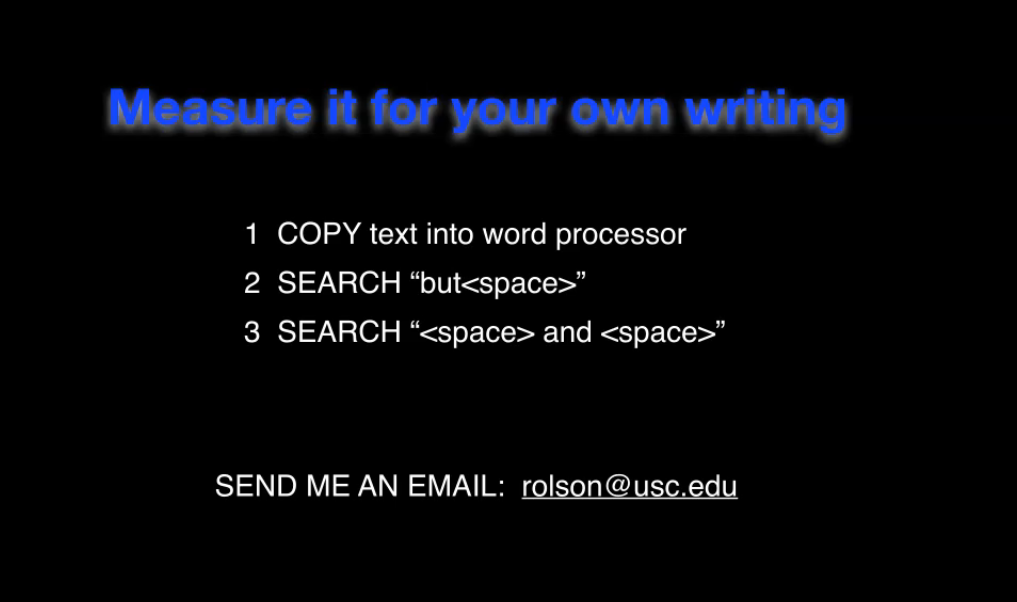
“They Say / I Say” – A book on arguing in an ABT-like style.
Uri Hasson’s Paper on Neurocinematics – For a look at how narrative and non-narrative affects the brain. This paper was referenced in the AAAS video.